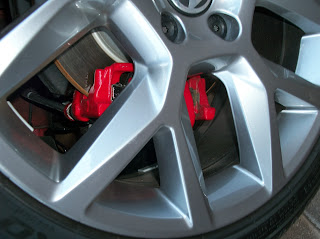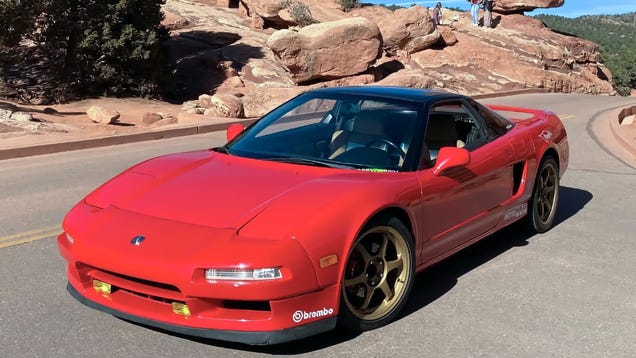 |
| Ruth Helm and her new Super in Palm Springs, April 1954 |
A car can be more than just a car. Sometimes it's a time machine as well, like the story I'm going to share with you about a very special 1954 Buick. Not a Buick Special- but a special Buick indeed.
 |
| "The Beautiful Buy" |
It was the spring of 1954 in the little farming town of Caney, Kansas, which was located in the Eastern third of the state just north of the Oklahoma border. Buick advertised itself in 1954 as "The Beautiful Buy" and the local grocer, Joe Elliott was much impressed with the new Buick line up. There were only Ford and Chevrolet agencies in town, so he decided to drive over to Coffeyville and have a look. He stopped by the market to get some cash from the safe and also to pick up his only grandson, Blaine Jenkins- to accompany him on the twenty mile trip. Blaine had just turned twenty and loved automobiles more than anything. He was studying architecture at the University of Kansas but had just applied to Art Center in Los Angeles and wanted to design cars. However, that day he and his Grandfather were focused on just one car- a new 1954 Buick.
They checked out all the cars in the showroom in Coffeyville and it turns out that they both were both taken by the same one- a new 1954 Super sedan in a color called Casino Beige with a green top. Mr. Elliott summoned the salesperson and signaled his intentions with a roll of bills. Soon he and Blaine were on the way back to Caney in the handsome new Super. To this day, Blaine recalls how thrilling the drive home was.
 |
| Motor Trend profiles the 1954 Buick |
It turns out that Joe Elliott wasn't the only person enamored of the new '54 Buick. Halfway across the country, in Hollywood, California- a lady named Ruth Helm was driving her 1948 Buick convertible past the Phil Hall Buick Showroom in on Sunset Boulevard, when a brand new Super convertible caught her eye. Coincidentally, this Super was also finished in the handsome Casino Beige, with a two tone green interior. She telephoned her husband Harvey at work that very afternoon to tell him she had seen a new Buick that she wished to buy.
 |
| George Burns and Gracie Allen |
Ruth seldom telephoned Harvey at work. As the Head Writer of the George Burns and Gracie Allen Television Show, Harvey was pretty busy working on a new show every week. Besides, Ruth had her own income serving as the President of the Hollywood Democratic Club as well as being a Personal Assistant to actor Eddie Albert. But nonetheless she phoned Harvey- who like much of Hollywood was a Buick owner himself, and told him of the beautiful new car. He told her that it's her money, and by all means to buy it if she wanted it.
 |
| The new Super in the Desert- Palm Springs, April 1954 |
Ruth drove the car out of Phil Hall's Showroom on March 31, 1954. Almost immediately she and Harvey took it on a spring trip to Palm Springs, where they stayed with George Burns and Gracie Allen at their desert home. Of course they took pictures of the beautiful new Buick that she placed in her photo album. The album shows several other trips as well- La Jolla, Half Moon Bay, and what appears to be Lake Tahoe. The big Buick was an excellent road car, and the three of them traveled well together.
 |
| Harvey Helm and the Super in La Jolla, 1956 |
 |
| Harvey and the Super at Pigeon Point, Pescadero CA 1956 |
Now these stories might seen totally unrelated but fate has a way of making people intersect. Back in Kansas, young Blaine had been accepted into Art Center and was preparing for a move to Los Angeles. His Mother suggested that she look up her old College Roommate there, a lady she knew as Ruth Van Eaton- but Ruth was now Mrs. Harvey Helm. Blaine arrived in Los Angeles in the fall and did indeed look up the Helms. His first memory was seeing her nearly new 1954 Super convertible- in the same Casino Beige that his Grandfather had. Sitting beside it in the garage was Harvey's new 1955 powder blue Century convertible, suggested that they had indeed been pleased with Ruth's purchase.
 |
| Harvey, Ruth's niece and Blaine clean out the garage, 1955. |
The childless couple took Blaine under their wing and became his honorary extended family. Both of Blaine's parents had been only children, so he came to regard the Helms as the Aunt and Uncle he never had. He recalls chauffeuring Ruth in the '54 and riding with Harvey in the blue '55. He tended bar for their Hollywood parties and met any of the celebrities of the day, and they all watched the Burns and Allen Show together on Tuesday nights. He had one special memory of accompanying Harvey to the VIP opening of Disneyland in 1956- it seems that being the Head Writer for Burns and Allen had its perks.
 |
| Blaine and Harvey head to Disneyland, July 17, 1955 |
But his time in Los Angeles was growing short. Graduation from Art Center neared and Blaine was offered a job at General Motors at the brand new Technical Center in Warren. He bade the Helms and their pair of convertibles farewell and drove East to start his career. And quite a career it was- becoming first a designer and later a Studio Chief, working on many, many Chevrolet and later Oldsmobile products including the Mako Shark and nearly every Corvair. Creating the first Monza, the first Caprice, and the first Ninety Eight Regency were just a few among his many accomplishments.
 |
| Ruth's Lubricare card from Phil Hall Buick |
From time to time, travel would take Blaine to Los Angeles and he would look up the Helms. He kept in contact with Ruth even after Harvey passed away in 1965. Ruth got herself a new Buick in 1968, but being unimpressed with the trade allowance she simply kept the old '54, and the two cars sat side by side in her garage. Her health declined and they eventually stopped corresponding.
And then, in the Autumn of 1976, Blaine Jenkins got a letter from Los Angeles. It was from the Helms' family attorney, advising Blaine that Ruth Helm had passed away in late summer- and that he had been left the Buick in her will. The purpose of the letter was to politely ask if he indeed wanted the car, which at that point had sat unused inside the garage for several years and was valued by the Estate Appraiser at a mere two hundred dollars. Blaine didn't hesitate for a second and advised the attorney that he did indeed wish to have it. It took a few months for everything to be settled, but by the spring of 1977 a dusty old Buick was on a truck to Detroit.
 |
| "Ruth" arrives in Detroit, 1977 |
The Buick, which Blaine called Ruth after his friend- arrived looking a bit neglected. The original paint was thin and the top was worn. Careless movers had dented the bumper and broke the grille. The interior had some seams coming apart and the carpet was worn through. But all in all, it was a straight, solid, and rust free example of a 1954 Super convertible with just over 80,000 original miles- and one of only 3,343 produced. He got it running and drove it for a few seasons, before taking it down for a proper restoration.
 |
| The Super in Unrestored condition, 1980 |
The car was largely disassembled and stripped down, Except for a past repair to the passenger door, it was in remarkably good condition. It was refinished in the original Casino Beige and the bright work was polished and replated as needed. The top frame was restored and a new top and well were sewn. The engine and transmission came out and both were rebuilt and detailed. But the green interior was largely reused. The seats were resewn and the door panels simply cleaned. New carpeting and rubber was installed, and the dash and garnish moldings repainted. The only change from original was the addition of a set of chrome plated wire wheels, which were a correct factory option for the car.
 |
| Under restoration in 1986 |
 |
| Going back together, late 1986 |
 |
| Resplendent Ruth upon completion, 1987 |
Blaine is long retired from General Motors, and lives in Palm Springs with his partner of 38 years, Philip. He's owned a number of classic cars over the years but there's one in his garage that he will never part with. After all, he's had it for thirty seven years- almost twice as long as the original owner did. Even more remarkably, the Super hasn't been in the stream of commerce since Ruth Helm handed over a check almost 59 years ago to the day. The Buick shines as brightly as it did when the restoration was completed almost 25 years ago.
Blaine is recovering from surgery these days and doesn't drive himself, so I make it a point to drop by and take him for a ride in the Buick he has known for almost six decades. The Buick rolls along on glistening wire wheels, incapable of processing the passage of time. I glance over at him when we drive, and I'm not sure if it's Joe Elliott or Ruth Helm that he's visualizing riding along with us.
 |
| Blaine, Philip and "Ruth" March, 2013 |
As I said, a car can be more than just a car. Sometimes it's a time machine as well.
Special Thanks to Casey Shain of the Art and Colour Blog for photo restoration.

































































































